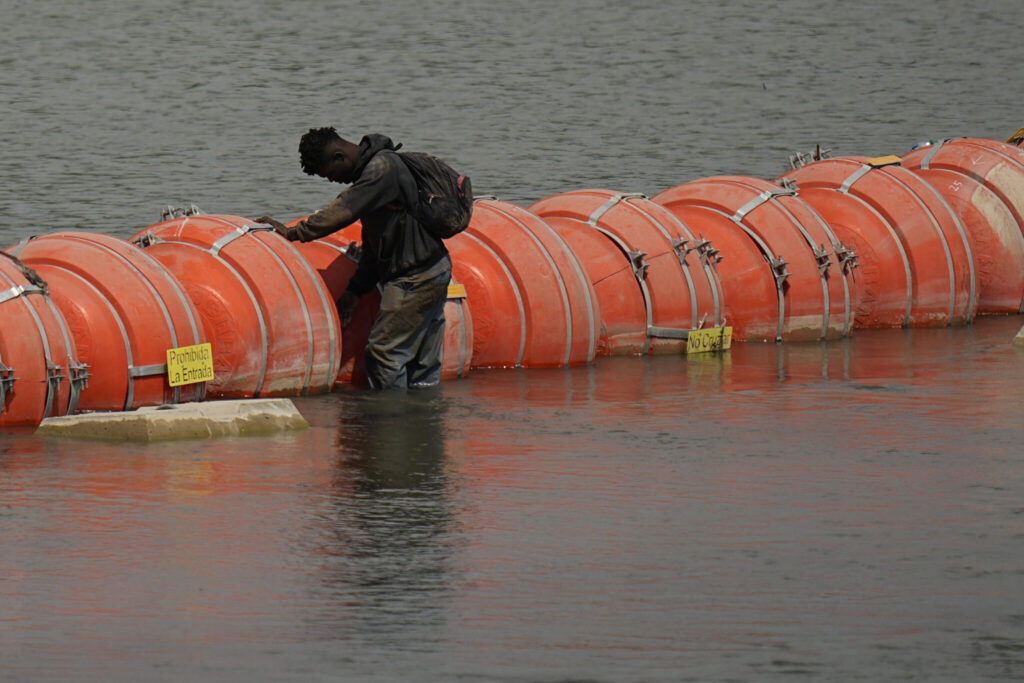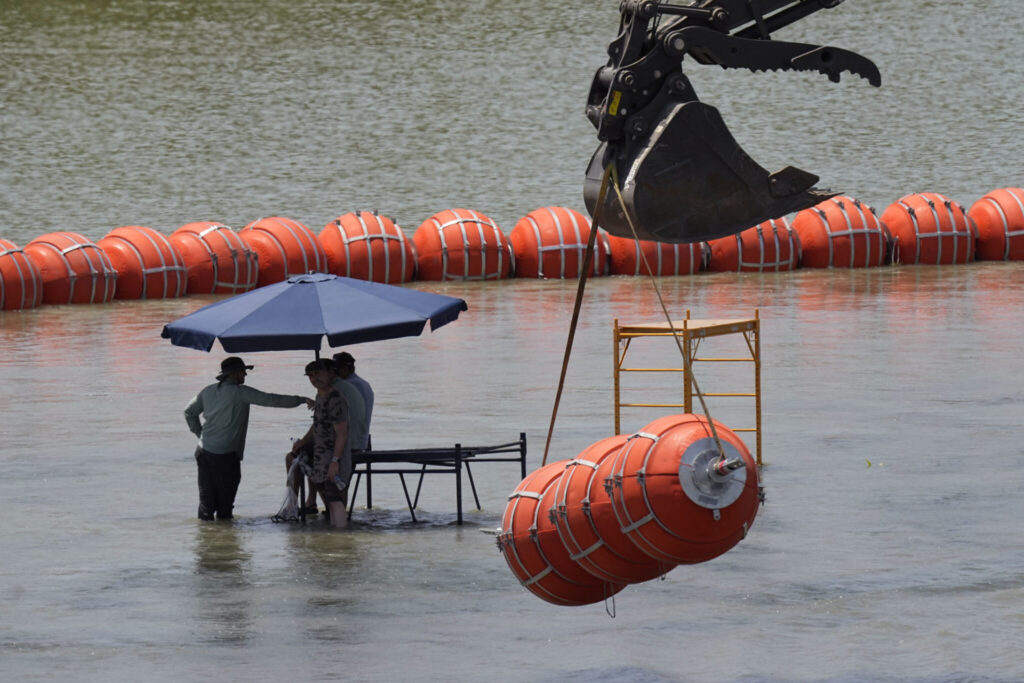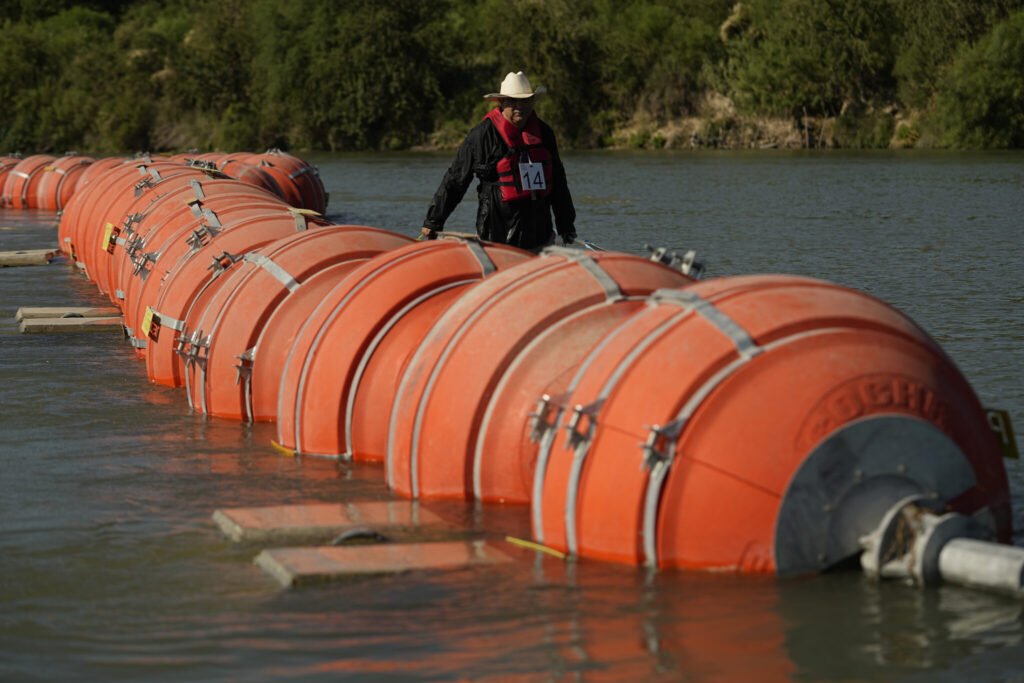Texas must move a floating barrier on the Rio Grande that drew backlash from Mexico, a federal appeals court ruled, dealing a blow to one of Republican Gov. Greg Abbott’s aggressive measures aimed at stopping migrants from entering the U.S. illegally.
Quick Read
- Court Ruling Against Texas Barrier: The 5th U.S. Circuit Court of Appeals ruled that Texas must move a floating barrier on the Rio Grande, a measure aimed at stopping migrants from entering the U.S. illegally.
- Background of the Barrier: Installed by Texas under Governor Greg Abbott, the roughly 1,000-foot barrier was intended to curb illegal immigration but drew criticism from Mexico and faced legal challenges.
- Appeals Court Decision: The court sided with a lower court ruling from September, ordering Texas to relocate the barrier to the riverbank.
- Legal Challenges for Texas: This ruling marks Texas’ second legal defeat over its border operations in a week, following a decision allowing U.S. Border Patrol agents to cut razor wire installed by the state.
- Federal Law and Navigable Waters: The court agreed with the Biden administration that the Rio Grande is subject to federal laws protecting navigable waters.
- Abbott’s Response: Governor Abbott called the decision “clearly wrong” and indicated plans to seek a rehearing and potentially appeal to the Supreme Court.
- Biden Administration’s Lawsuit: The Biden administration sued Texas under the Rivers and Harbors Act, asserting the federal government’s responsibility for immigration enforcement.
- Dissenting Opinion: Judge Don Willet, a Trump appointee, argued that moving the barrier wouldn’t resolve tensions between the U.S. and Mexico and suggested complete removal as a solution.
- Immigration Through Eagle Pass: The barrier’s location near Eagle Pass was a significant crossing point, with nearly 400,000 attempts to enter the U.S. in the last fiscal year.
- Effectiveness of the Barrier: The lower court, under Judge David Ezra, questioned the effectiveness of the barrier in curbing illegal immigration, citing a lack of credible evidence.
The Associated Press has the story:
Court orders Texas to move floating buoy barrier that drew backlash from Mexico
Newslooks- McALLEN, Texas (AP)
Texas must move a floating barrier on the Rio Grande that drew backlash from Mexico, a federal appeals court ruled, dealing a blow to one of Republican Gov. Greg Abbott’s aggressive measures aimed at stopping migrants from entering the U.S. illegally.
The decision by the 5th U.S. Circuit Court of Appeals requires Texas to stop any work on the roughly 1,000-foot (300-meter) barrier and move it to the riverbank. The order sided with a lower court decision in September that Abbott called “incorrect” and had predicted would be overturned.

Instead, the New Orleans-based court handed Texas its second legal defeat this week over its border operations. On Wednesday, a federal judge allowed U.S. Border Patrol agents to continue cutting razor wire the state installed along the riverbank, despite the protests of Texas officials.
For months, Texas has asserted that parts of the Rio Grande are not subject to federal laws protecting navigable waters. But the judges said the lower court correctly sided with the Biden administration.
“It considered the threat to navigation and federal government operations on the Rio Grande, as well as the potential threat to human life the floating barrier created,” Judge Dana Douglas wrote in the opinion.

Abbott called the decision “clearly wrong” in a statement on X, formerly Twitter, and said the state would immediately seek a rehearing from the court.
“We’ll go to SCOTUS if needed to protect Texas from Biden’s open borders,” Abbott posted.
The Biden administration sued Abbott over the linked and anchored buoys — which stretch roughly the length of three soccer fields — after the state installed the barrier along the international border with Mexico. The buoys are between the Texas border city of Eagle Pass and Piedras Negras, Coahuila.
Thousands of people were crossing into the U.S. illegally through the area when the barrier was installed. The lower district court ordered the state to move the barriers in September, but Texas’ appeal temporarily delayed that order from taking effect.

The Biden administration sued under what is known as the the Rivers and Harbors Act, a law that protects navigable waters. In a statement Friday, the U.S. Department of Homeland Security said it welcomed the ruling, adding that enforcing immigration law is a federal responsibility and that consequences are applied to those who cross the border without authorization.
In a dissent, Judge Don Willet, an appointee of former President Donald Trump and a former Texas Supreme Court justice, said the order to move the barriers won’t dissolve any tensions that the Biden administration said have been ramping up between the U.S. and Mexico governments.

“If the district court credited the United States’ allegations of harm, then it should have ordered the barrier to be not just moved but removed,” Willet wrote. “Only complete removal would eliminate the “construction and presence” of the barrier and meet Mexico’s demands.”
Nearly 400,000 people tried to enter the U.S. through the section of the southwest border that includes Eagle Pass last fiscal year.
In the lower court’s decision, U.S. District Judge David Ezra cast doubt on Texas’ rationale for the barrier. He wrote at the time that the state produced no “credible evidence that the buoy barrier as installed has significantly curtailed illegal immigration.”







